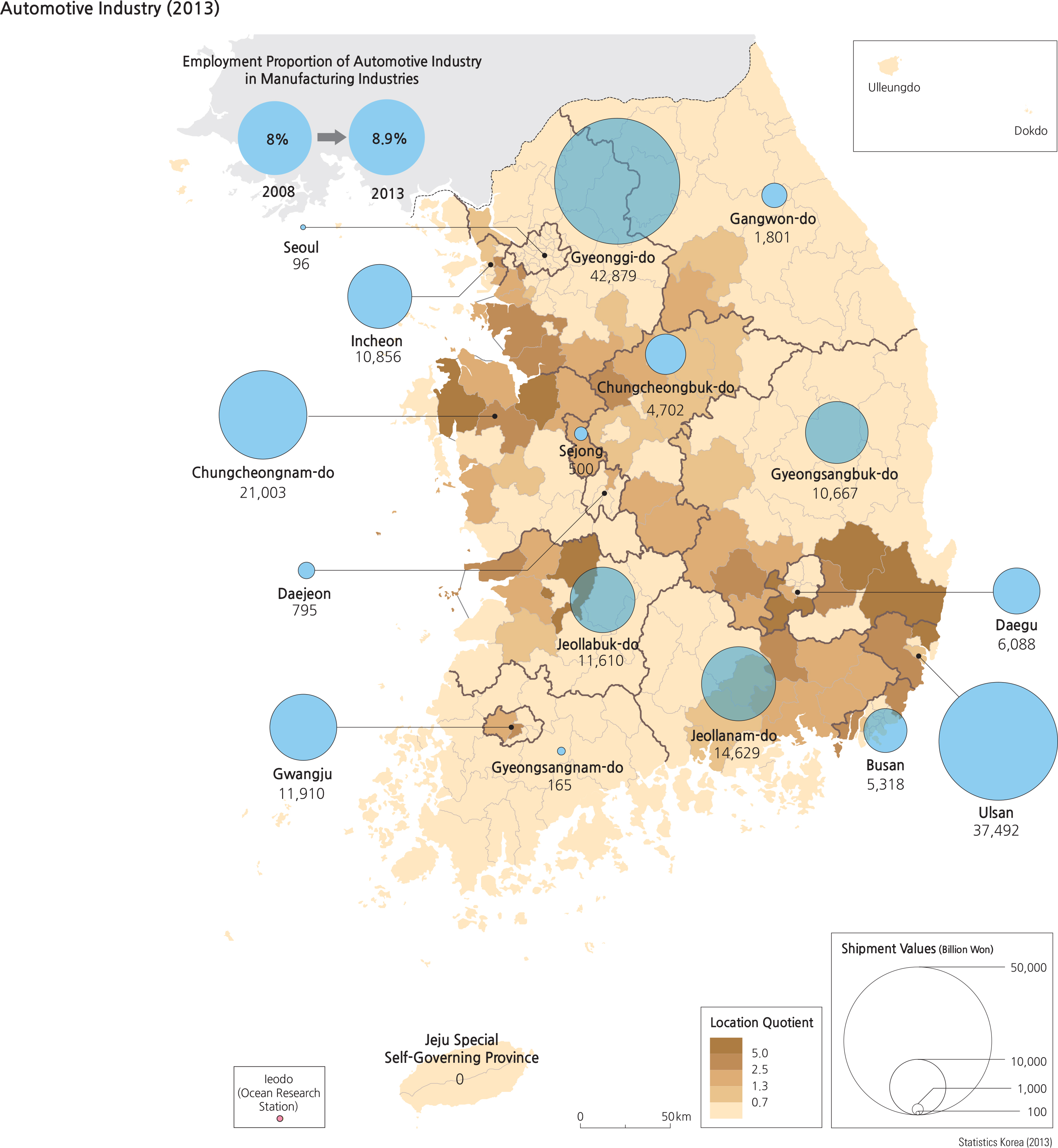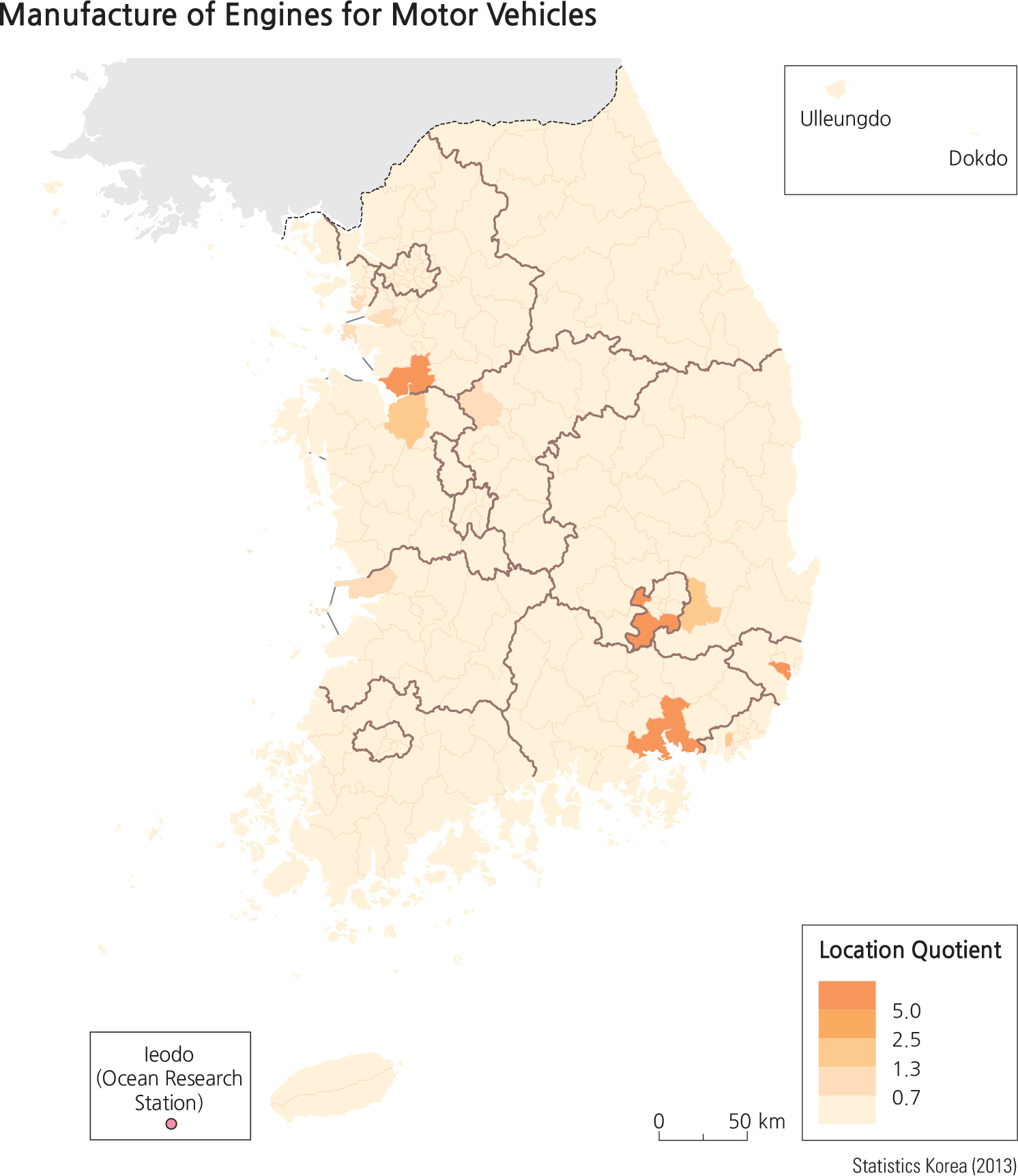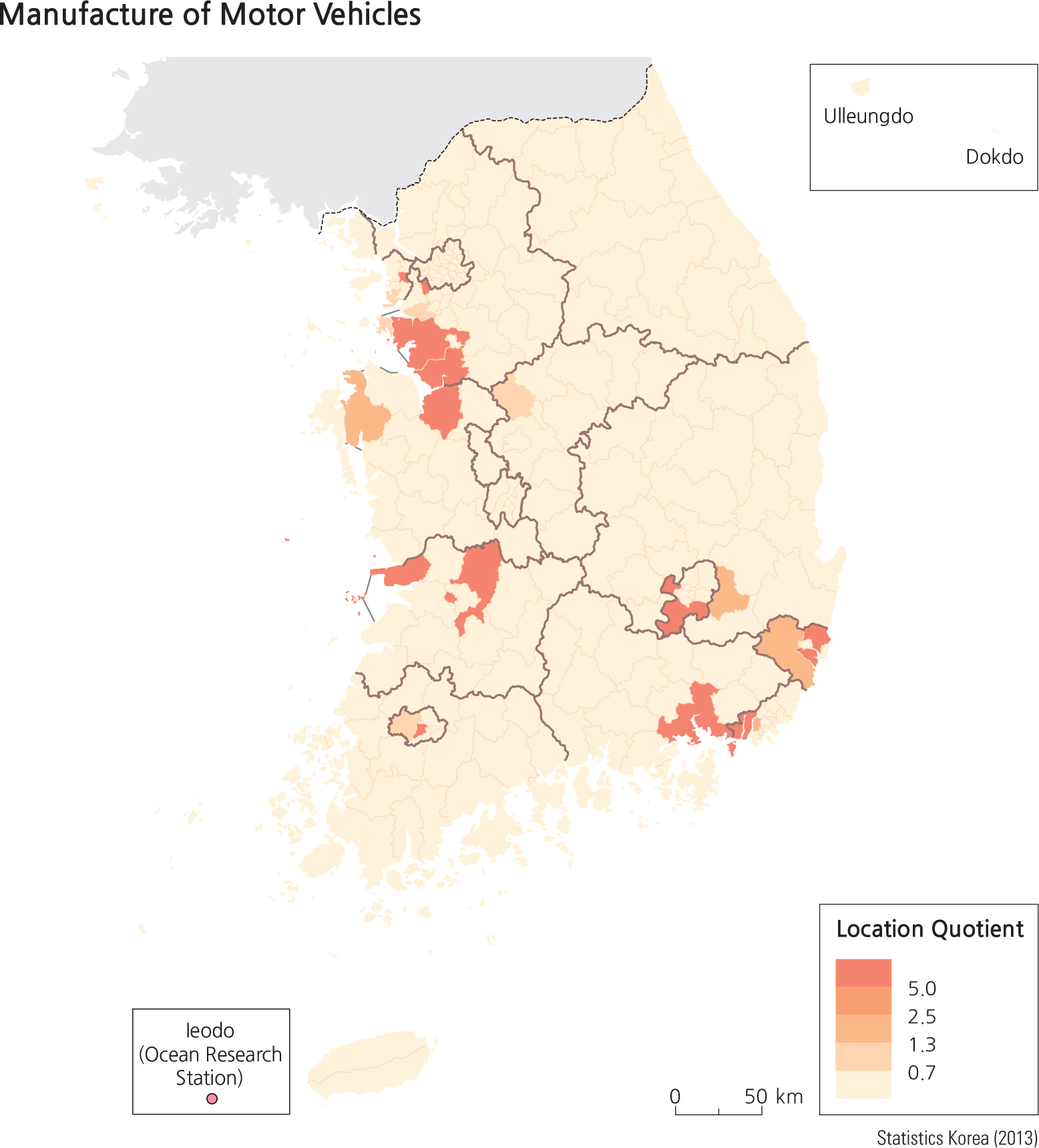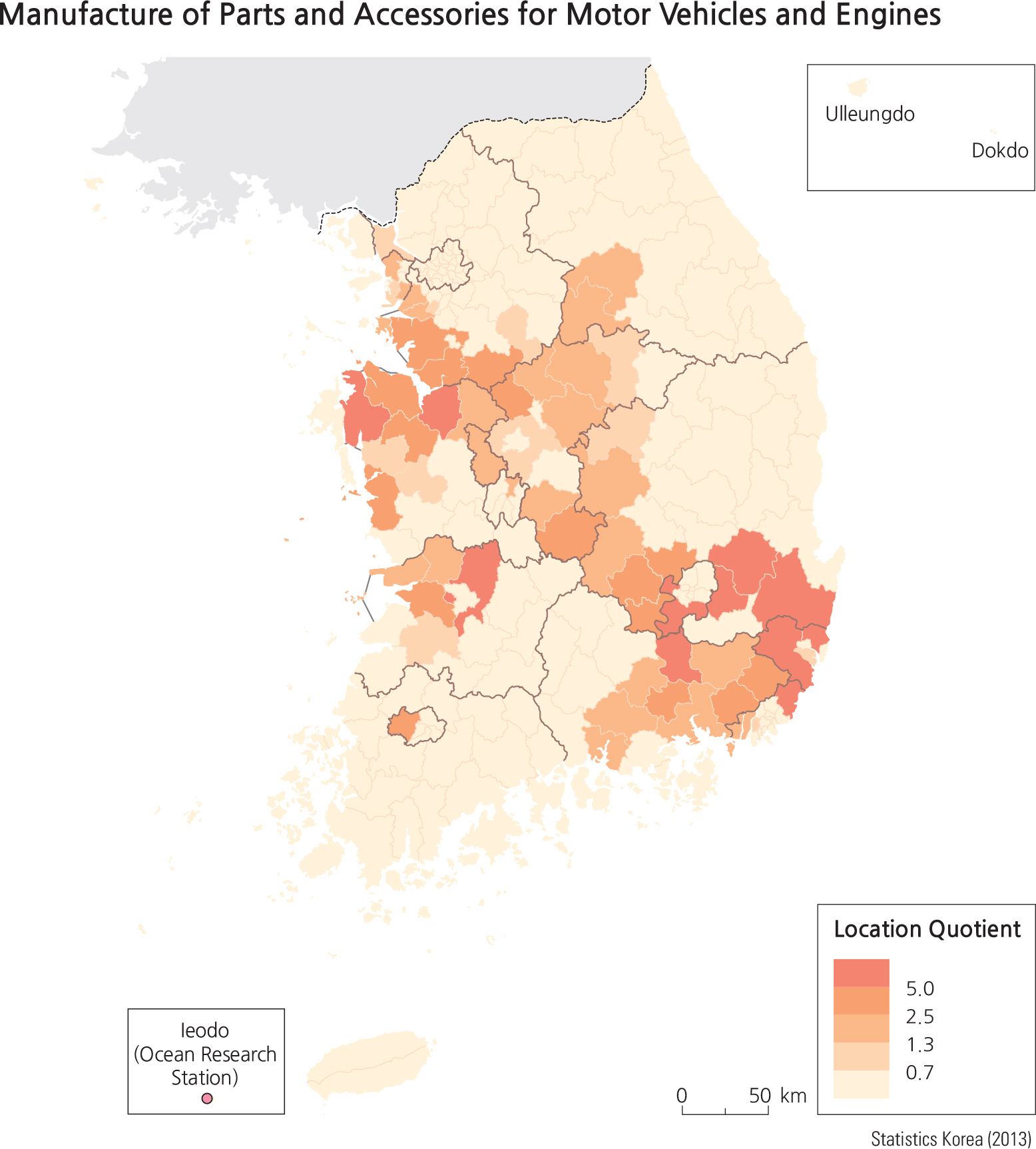Comprehensive Edition
According to the 9th Korean Standard Industrial Classification, the automobile industry can be subdivided into manufacturers of motor vehicles, engines for motor vehicles, bodies for motor vehicles, trailers and semitrailers, and other parts and accessories for motor vehicles. The places with the highest location quotients for the automobile industry are Ulsan, Wanju-gun, Seosan, Dalseong-gun, Yeongcheon, and Asan, with prominent concentrations in Ulsan, Chungcheongnam-do, and Gyeongsangbuk-do. The locations with the highest number of manufacturing enterprises are Gyeonggi-do, Ulsan, Gyeongsangnam-do, and Chungcheongbuk-do. The locations with the highest production cost and value-added manufacturing rankings are Gyeonggi-do, Ulsan, Chungcheongnam-do, and Gyeongsangnam-do. In reviewing the subsections of the automobile industry, manufacturers of motor vehicles are concentrated in Bupyeong-gu in Incheon, Buk-gu in Ulsan, Hwaseong, Wanju-gun, Changwon, Gunsan, Asan, Seogu in Gwangju, and Gwangmyeong. The locations with the highest concentration of manufacturers of engines for motor vehicles are Changwon-si, Dalseong-gu in Daegu, Nam-gu in Ulsan, Pyeongtaek, Seogwipo in Jeju, and Asan. Manufacturers of motor vehicle and manufacturers of engines for motor vehicle are highly concentrated in the top five cities with a location quotient of 50 or above. A similar pattern can be found for manufacturers of engines for motor vehicles in the top five cities with a location quotient of 10 or above. For areas outside of these top five cities in each category, the location quotient was mostly less than 1.
Brief Interpretation of the Maps
|





